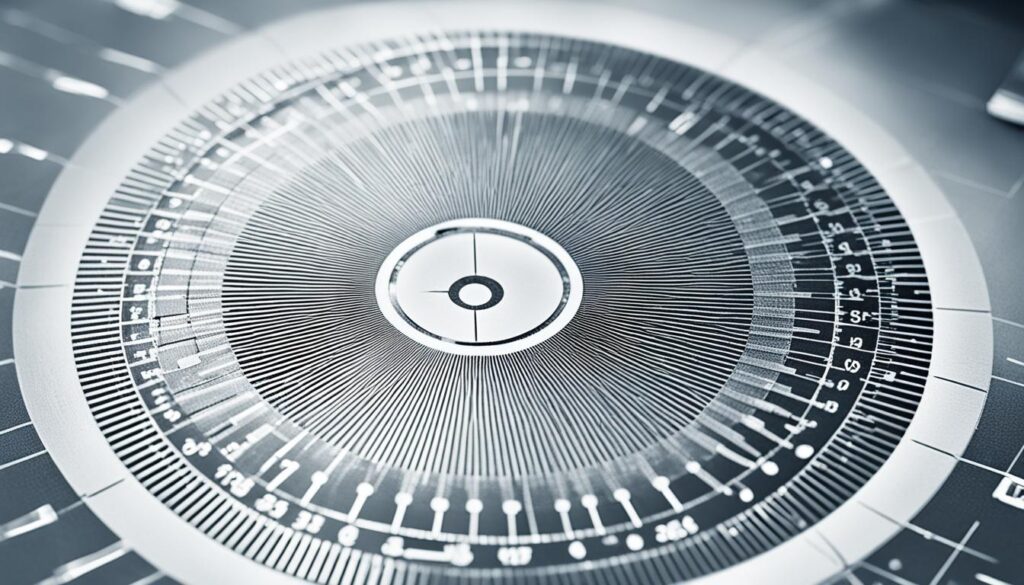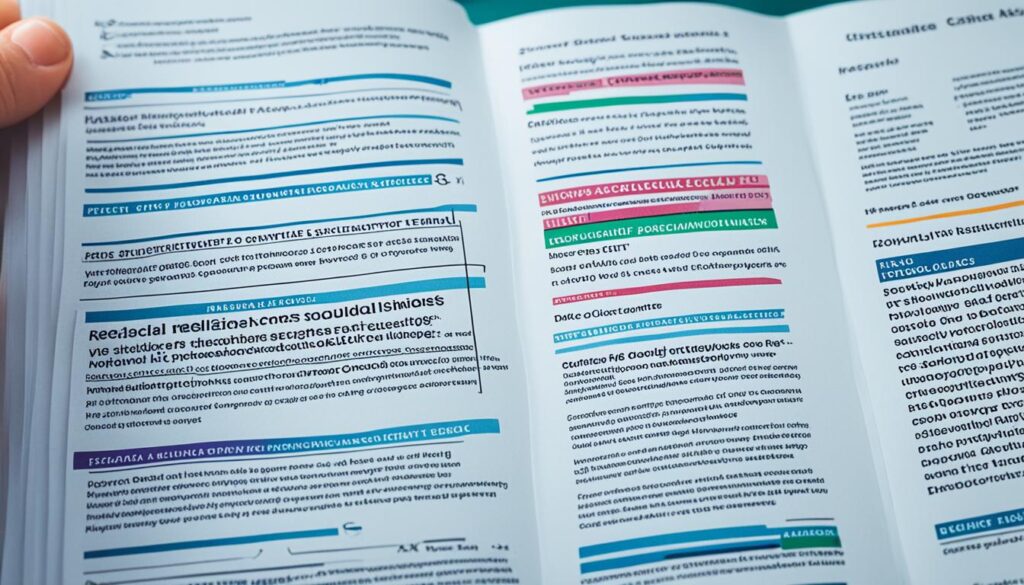Medical diagnosis is a crucial aspect of healthcare that involves the process of identifying and classifying a patient’s condition or disease. It is essential for accurate and timely diagnosis to ensure appropriate treatment and positive health outcomes. Medical diagnosis encompasses various methods such as diagnostic tests, medical imaging, and clinical evaluation by healthcare professionals like clinicians. The ultimate goal of medical diagnosis is to provide a prognosis and develop a treatment plan based on the identified condition.
Key Takeaways : Medical Diagnosis
- Medical diagnosis is the process of identifying and classifying a patient’s condition or disease.
- It involves diagnostic tests, medical imaging, and clinical evaluation by healthcare professionals like clinicians.
- The goal of medical diagnosis is to provide a prognosis and develop a treatment plan based on the identified condition.
- Accurate and timely diagnosis is crucial for appropriate treatment and positive health outcomes.
- The diagnostic process includes gathering information, conducting tests, and evaluating the patient’s symptoms and medical history.
The Importance of Medical Diagnosis
Medical diagnosis plays a vital role in patient care as it enables healthcare professionals to identify and understand the signs and symptoms exhibited by patients. By gathering information about the patient’s medical history, conducting a physical examination, and performing diagnostic procedures, healthcare professionals can make informed decisions about the appropriate treatment and management of the patient’s condition.
“Accurate diagnosis is the foundation of effective healthcare, enabling clinicians to develop tailored treatment plans based on the patient’s specific needs.” – Dr. Emily Jones, Chief Medical Officer
The process of medical diagnosis involves not only identifying the signs and symptoms but also classifying the condition based on established classification criteria and guidelines. This classification ensures that the patient receives the most suitable and effective treatment. Whether it’s determining the cause of a persistent cough or diagnosing a complex medical condition, the diagnostic process is essential for providing quality care.
Through the use of diagnostic procedures such as blood tests, imaging scans, and biopsies, healthcare professionals can gather important data to confirm or rule out potential diagnoses. This information is crucial in guiding treatment decisions and monitoring the patient’s progress. The physical examination is another critical component of the diagnostic process, as it allows healthcare professionals to assess the patient’s overall health and identify any physical abnormalities that may be indicative of an underlying condition.
By accurately diagnosing the patient’s condition, healthcare professionals can ensure that appropriate treatment is provided promptly. Without a proper diagnosis, the effectiveness of treatment may be compromised, leading to delays in recovery or potentially exacerbating the patient’s condition. Medical diagnosis is the starting point for delivering optimal care and improving patient outcomes.
Early Diagnosis and Improved Prognosis
An early and accurate diagnosis can significantly impact the patient’s prognosis. By identifying a condition in its early stages, healthcare professionals can initiate treatment promptly, potentially preventing further complications and improving overall patient outcomes. Additionally, early diagnosis may enable patients to access specialized care or participate in clinical trials, enhancing their chances of successful treatment and recovery.
Receiving a timely and accurate diagnosis also provides patients with a sense of clarity and validation, as they gain a better understanding of their signs and symptoms. This understanding can alleviate anxiety and uncertainty, allowing patients to actively participate in their own care and treatment decisions.
In conclusion, medical diagnosis is a fundamental pillar of patient care, guiding healthcare professionals in determining the appropriate treatment and management for patients. By considering the patient’s signs and symptoms, conducting a thorough medical history review, performing a comprehensive physical examination, utilizing various diagnostic procedures, and classifying the condition, healthcare professionals can provide the best possible care and improve patient outcomes.
The Diagnostic Process
The diagnostic process is a systematic approach used to accurately determine a patient’s condition. It involves a series of steps that healthcare professionals follow to gather information and make a definitive diagnosis. By carefully evaluating test results, medical history, and physical examination findings, primary care providers can use the process of differential diagnosis to consider multiple potential causes for the patient’s symptoms. They compare the patient’s presentation with established diagnostic criteria to arrive at an accurate conclusion.
The diagnostic process starts with the collection of relevant information, which includes reviewing test results from laboratory tests or medical imaging. This information helps healthcare professionals gain insights into the patient’s condition and provides valuable clues for further evaluation.
In primary care settings, healthcare professionals play a crucial role in initial diagnosis. They utilize the process of differential diagnosis, where they consider all possible causes and systematically narrow down the options based on the patient’s symptoms and test results. By gathering a comprehensive understanding of the patient’s medical history, performing a physical examination, and analyzing test results, primary care providers can make informed decisions regarding the most likely diagnosis.
Diagnostic criteria are essential guidelines that help healthcare professionals determine whether a patient meets the criteria for a specific condition. These criteria are based on established medical knowledge and research, and they provide a structured framework for assessing the patient’s symptoms and test results.
The diagnostic process requires careful evaluation and consideration of all available information. By integrating the patient’s medical history, test results, physical examination findings, and diagnostic criteria, healthcare professionals can arrive at an accurate diagnosis. This process is critical for guiding appropriate treatment and care decisions, ensuring optimal outcomes for patients.

Key Steps in the Diagnostic Process:
- Gathering relevant information, including test results, medical history, and physical examination findings.
- Utilizing the process of differential diagnosis to consider multiple potential causes for the patient’s symptoms.
- Comparing the patient’s presentation with established diagnostic criteria to make a definitive diagnosis.
The diagnostic process is a dynamic and iterative journey that requires the expertise and collaboration of healthcare professionals. By carefully analyzing test results, considering differential diagnoses, and applying diagnostic criteria, healthcare providers can confidently make accurate diagnoses and provide appropriate treatment plans.
Diagnostic Tools and Techniques
When it comes to medical diagnosis, the utilization of diagnostic tools and techniques is paramount. One such tool that stands out is Magnetic Resonance Imaging (MRI).
MRI is a medical imaging technique that is commonly employed to visualize and identify abnormalities within the body. It is particularly useful in the diagnosis of various conditions, including dementia. The detailed images produced by an MRI scan allow healthcare professionals to accurately detect and evaluate signs of dementia in the brain.
These diagnostic tools not only aid in the identification of conditions but also play a crucial role in developing effective diagnostic and treatment plans. By utilizing the insights gained from diagnostic imaging, health professionals can make informed decisions about the appropriate course of action for patients.
Furthermore, pathologists also contribute significantly to the diagnostic process. Through the examination of tissue samples obtained from biopsies, pathologists can provide valuable insights into the presence of diseases or conditions. Their expertise and analysis help health professionals reach accurate diagnoses and determine suitable treatment approaches.
Collaboration between health professionals and the strategic use of various diagnostic techniques further enhance the effectiveness and accuracy of the diagnosis and treatment process. By leveraging these tools and expertise, it is possible to ensure that patients receive the appropriate care and management for their specific conditions.
Benefits of Diagnostic Tools and Techniques
The utilization of diagnostic tools and techniques brings several benefits to the diagnostic process:
- Enhanced Accuracy: Diagnostic imaging such as MRI provides detailed and precise visualizations, aiding in accurate diagnosis and treatment planning.
- Efficient Treatment: The accurate identification of conditions and diseases enables health professionals to develop effective treatment plans tailored to each patient’s needs.
- Specialized Expertise: Pathologists’ examination of tissue samples brings specialized knowledge and insights, contributing to the accuracy of the diagnostic process.
- Collaborative Approach: The collaboration between health professionals ensures comprehensive and multidisciplinary insights into patient conditions, leading to better outcomes.
By harnessing the power of diagnostic tools and techniques like MRI, and leveraging the expertise of health professionals and pathologists, the diagnostic process becomes a robust and comprehensive means of identifying and classifying medical conditions.
| Diagnostic Tools and Techniques | Benefits |
|---|---|
| * MRI * | Accurate visualization of abnormalities |
| * Pathology examination * | Specialized insights into tissue samples |

Challenges and Errors in Medical Diagnosis
Despite its critical role in healthcare, medical diagnosis is not without its challenges and potential errors. The complex process of diagnostic reasoning, which involves evaluating and interpreting clinical information, can be influenced by various factors.
One challenge in medical diagnosis is the limitations of certain diagnostic tests. For example, mammography, a frequently used screening tool for detecting breast cancer, may have limitations in accuracy. False negatives and false positives may occur, leading to potential misdiagnosis or delayed diagnosis.
Furthermore, the prevalence of certain conditions or diseases can impact the frequency and accuracy of their diagnosis. Conditions with low prevalence or rare diseases may pose challenges in accurate diagnosis due to limited knowledge and experience.
It is crucial for healthcare professionals to be aware of these challenges and continuously strive to improve the accuracy and reliability of the diagnostic process. Ongoing training, collaboration, and staying updated with the latest research are essential in overcoming these challenges and minimizing diagnostic errors.

Improving the Diagnostic Process
To enhance the diagnostic process and reduce diagnostic errors, efforts have been made to improve diagnostic reasoning and decision-making. The National Academies Press has published resources and guidelines aimed at advancing the understanding and practice of diagnosis in healthcare. These resources highlight the importance of considering the patient’s medical history, current health status, and condition to make accurate diagnoses. By adopting standardized approaches and utilizing clinical decision support systems, healthcare professionals can improve the accuracy and reliability of the diagnostic process.
The National Academies Press plays a pivotal role in driving improvements in the diagnostic process. Their publications provide healthcare professionals with valuable insights and guidance on enhancing diagnostic reasoning and decision-making. By incorporating recommendations from these resources, medical practitioners can reduce diagnostic errors and deliver better patient outcomes.
One key aspect emphasized by the National Academies Press is the significance of taking into account the patient’s comprehensive medical history. Understanding the patient’s past medical conditions, treatments, and medications can provide crucial context and assist in accurate diagnoses. Additionally, considering the patient’s current health status and condition is vital for identifying the most appropriate diagnostic tests and procedures.
Standardized approaches play a crucial role in improving the diagnostic process. Adhering to established guidelines and protocols ensures consistency and eliminates potential variations in diagnostic practices. Healthcare professionals can benefit from standardized approaches by following evidence-based recommendations and best practices.
Clinical decision support systems are invaluable tools in aiding diagnostic decision-making. These systems provide healthcare professionals with real-time access to relevant medical information, research, and diagnostic guidelines. By utilizing these systems, practitioners can integrate the latest knowledge and evidence into their diagnostic processes, leading to more accurate and informed decisions.
Key Benefits of Improving the Diagnostic Process:
- Reduced diagnostic errors
- Enhanced accuracy in diagnoses
- Better patient outcomes
- Efficient utilization of healthcare resources
By actively working towards improving the diagnostic process, healthcare professionals can address the challenges associated with diagnostic errors and enhance patient care. The National Academies Press continues to support the advancement of diagnostic practices through their publications, emphasizing the importance of a comprehensive approach that considers the patient’s medical history, current health, and condition.
The Role of Clinical Practice Guidelines
Clinical practice guidelines play a crucial role in the diagnostic process. These evidence-based recommendations provide healthcare professionals with guidance on determining a diagnosis, ensuring that the diagnostic decisions are based on the best available evidence. The guidelines outline the appropriate use of medical tests and procedures based on current medical knowledge and research. Following these guidelines helps healthcare professionals ensure the accuracy and effectiveness of the diagnostic process.
Diagnostic accuracy is a fundamental aspect of healthcare, as it forms the basis for determining the most appropriate treatment and management strategies for a patient’s disease or condition. It involves a comprehensive evaluation of the patient’s symptoms, medical history, and results from medical tests and diagnostic procedures. The process of diagnosis also relies on the clinician’s medical knowledge and expertise.
However, effective diagnosis involves more than just clinical judgment. It requires a structured and standardized approach, which is where clinical practice guidelines play a vital role. These guidelines provide healthcare professionals with a roadmap for determining a diagnosis by outlining the appropriate steps and tests to be conducted based on the patient’s presentation and medical history.
By following these guidelines, healthcare professionals are able to ensure consistency, efficiency, and accuracy in the diagnostic process. They help reduce variation in practice, promote the use of evidence-based diagnostic methods, and minimize the risk of errors or overlooking critical information.
“Clinical practice guidelines provide healthcare professionals with evidence-based recommendations for determining a diagnosis and ensuring the accuracy and effectiveness of the diagnostic process.”
Guidelines may be developed by professional organizations, government agencies, or expert panels and are typically based on a rigorous review of the available medical literature and consensus among experts in the field. They are regularly updated to reflect advances in medical knowledge and technology. By adhering to these guidelines, healthcare professionals can make informed decisions about diagnostic tests and procedures, resulting in improved patient care outcomes.
Moreover, clinical practice guidelines help bridge the gap between research and practice by translating complex medical information into practical recommendations that can be easily implemented in clinical settings. They provide healthcare professionals with clarity and confidence in their diagnostic decisions, ensuring that they are in line with the current best practices.
Benefits of Clinical Practice Guidelines:
- Standardized approach: Guidelines provide a standardized and consistent framework for the diagnostic process, reducing variability and ensuring that all relevant factors are considered.
- Evidence-based recommendations: Guidelines are based on the latest medical research and knowledge, ensuring that diagnostic decisions are grounded in the best available evidence.
- Minimize errors: By following established guidelines, healthcare professionals can minimize the risk of diagnostic errors and improve the accuracy of their diagnoses.
- Promote efficiency: Guidelines help streamline the diagnostic process by providing clear steps and recommendations, allowing healthcare professionals to make efficient and informed decisions.
- Enhance patient care: Adhering to guidelines ensures that patients receive the most appropriate diagnostic tests and procedures, leading to effective treatment and management strategies.
The use of clinical practice guidelines in the diagnostic process is crucial in ensuring that healthcare professionals have access to the most up-to-date and evidence-based recommendations for determining a diagnosis. By following these guidelines, healthcare professionals can improve the accuracy and effectiveness of the diagnostic process, ultimately leading to better patient care outcomes.

The Connection Between Diagnosis and Treatment
The diagnosis and subsequent treatment of a medical condition are inherently interconnected. A precise and timely diagnosis is pivotal in formulating an appropriate treatment plan that caters to the patient’s specific needs. The differential diagnosis process, which involves considering various potential diagnoses based on the patient’s symptoms, plays a crucial role in narrowing down the most probable condition and tailoring the treatment plan accordingly.
“The accuracy of diagnosis directly influences the effectiveness of treatment, making it essential for healthcare professionals to strive for accurate and precise diagnoses.”
Errors in diagnosis can have significant consequences, including the potential for administering inappropriate or ineffective treatment. Inaccurate diagnoses may also delay the start of necessary treatment, negatively impacting the patient’s outcomes and overall well-being.
By accurately diagnosing a patient’s condition, healthcare professionals lay the foundation for developing effective treatment plans that target the underlying cause of the illness or disease. A comprehensive understanding of the condition enables healthcare providers to choose the most appropriate interventions, therapies, or medications that align with the specific diagnosis.
The connection between diagnosis and treatment is exemplified in various healthcare scenarios. For example, in the case of a patient presenting with chest pain, a differential diagnosis could help determine whether the symptoms are indicative of a cardiac-related issue or another underlying condition. Once the precise diagnosis is established, the treatment plan can be tailored accordingly, focusing on interventions that address potential cardiovascular problems or alternative causes of the symptoms.
Optimal patient care necessitates accurate and precise diagnoses to ensure that treatment plans are specifically tailored to address the identified condition. A misdiagnosis or diagnostic error can lead to unnecessary interventions, delayed treatment, or detrimental health outcomes. Therefore, healthcare professionals must prioritize the clarity and accuracy of their diagnostic process to ultimately provide the highest standard of care for their patients.
| Benefits of a Correct Diagnosis | Consequences of Diagnostic Errors |
|---|---|
|
|
The Importance of a Comprehensive Treatment Plan
In conjunction with an accurate diagnosis, a comprehensive treatment plan addresses not only the immediate symptoms but also the underlying cause of the condition. It considers the patient’s overall health, medical history, and unique circumstances to develop a tailored approach that maximizes the likelihood of positive treatment outcomes.
A well-designed treatment plan may involve a combination of medication, therapies, lifestyle modifications, and other interventions. It is crucial for healthcare professionals to regularly reassess the patient’s progress, adjust the treatment plan as necessary, and engage in open communication with the patient to ensure their involvement and understanding of the process.
The Role of Diagnostic Reasoning
Diagnostic reasoning is an essential aspect of the diagnostic process. It involves the cognitive evaluation and interpretation of symptoms and signs to determine an accurate diagnosis. Healthcare professionals rely on their medical knowledge and clinical experience to recognize patterns and associations between symptoms and specific conditions. However, diagnostic reasoning is not infallible, and errors can occur due to various factors.
Continuous training, education, and collaboration among healthcare professionals are crucial for improving diagnostic reasoning and reducing diagnostic errors. Keeping up with the latest research and advancements in the field can enhance the ability to make accurate diagnoses. By staying informed, healthcare professionals can apply evidence-based practices and refine their diagnostic reasoning strategies.
Effective diagnostic reasoning requires a combination of clinical expertise and critical thinking skills.
The Importance of Diagnostic Accuracy
Diagnostic accuracy is paramount in providing appropriate and timely care to patients. A misdiagnosis or delayed diagnosis can have serious consequences, leading to unnecessary treatments, complications, or even harm. Recognizing the significance of accurate diagnoses, the National Academies of Sciences emphasizes the need for continuous improvement in the diagnostic process through research, education, and collaboration.
Recognizing Symptoms and Signs
Identifying and understanding symptoms and signs play a crucial role in diagnostic reasoning. Healthcare professionals need to carefully evaluate and interpret the patient’s presentation to determine the underlying condition. By closely observing symptoms and signs, along with relevant medical history, clinicians can make informed decisions regarding further diagnostic tests or consultations with specialists.
Reducing Diagnostic Errors
Diagnostic errors can occur at any stage of the diagnostic process and can be influenced by various factors such as cognitive biases, incomplete medical information, or time constraints. To address these challenges, healthcare systems and professionals must work together to implement strategies that mitigate diagnostic errors. The National Academies of Sciences provides valuable resources and guidance to enhance diagnostic safety and improve patient outcomes.
Table 1: Factors Contributing to Diagnostic Errors
| Factor | Description |
|---|---|
| Cognitive biases | Psychological factors that can lead to errors in decision-making. |
| Incomplete information | Lack of comprehensive patient data necessary for an accurate diagnosis. |
| Communication breakdown | Miscommunication or insufficient information transfer among healthcare providers. |
| Time constraints | Pressures to quickly make a diagnosis, leading to potential errors. |
Healthcare organizations can implement system-level interventions, such as improving communication and creating opportunities for multidisciplinary collaboration, to minimize diagnostic errors. Increasing awareness among healthcare professionals about the common pitfalls and biases in diagnostic reasoning can also contribute to error reduction.
Challenges in the Diagnostic Process
The diagnostic process can be complex and fraught with challenges that healthcare professionals must navigate. These challenges can often lead to diagnostic errors, which can have significant implications for decisions about treatment and patient outcomes.
One challenge is the cognitive process involved in making diagnoses. Healthcare professionals may be influenced by cognitive biases and heuristics, which can lead to errors in decision-making. These biases can affect how symptoms or signs are interpreted and can impact the accuracy of the diagnosis.
Symptoms or signs that are nonspecific or ambiguous can also pose challenges in the diagnostic process. These types of symptoms can make it difficult to determine the underlying cause of a patient’s condition. Healthcare professionals must carefully analyze and interpret these symptoms to arrive at an accurate diagnosis.
An important aspect of the diagnostic process is the ability to recognize patterns and identify relevant information from a large set of data. This cognitive skill is crucial for accurate diagnosis, as it allows healthcare professionals to identify key features and make connections between symptoms or signs and specific conditions.
To address these challenges, healthcare professionals must continuously strive to improve their diagnostic abilities through ongoing education and training. By staying updated on the latest research and best practices in diagnostic reasoning, healthcare professionals can enhance their skills and reduce the risk of diagnostic errors. Collaboration and consultation with colleagues can also provide valuable insights and perspectives that can aid in the diagnostic process.
Overall, the diagnostic process presents numerous challenges that healthcare professionals must overcome. By being vigilant, employing critical thinking skills, and continually expanding their knowledge and expertise, healthcare professionals can navigate these challenges and improve the accuracy of their diagnoses.
Advancements in Medical Diagnosis
Advancements in medical diagnosis have been driven by breakthroughs in areas such as medical genetics and technology, as well as the development of clinical decision support systems. These advancements have expanded the capabilities of medical professionals, allowing them to identify and diagnose various conditions with greater precision and accuracy.
The process of identifying and diagnosing medical conditions has become more sophisticated with the integration of medical genetics. Genetic testing and analysis have revolutionized the field of diagnosis by providing insights into patients’ genetic makeup and predisposition to certain diseases. This valuable information enables healthcare professionals to tailor treatment plans and interventions based on an individual’s genetic profile.
Technological advancements have also played a significant role in improving medical diagnosis. Sophisticated imaging techniques, such as MRI and CT scans, allow for detailed visualization of internal structures and help detect abnormalities that may not be evident through physical examination alone. These medical procedures provide valuable information that aids in accurate diagnosis and treatment planning.
“Advancements in medical genetics and technology have expanded the scope of medical diagnosis, enabling more precise and accurate diagnoses.”
Furthermore, the integration of clinical decision support systems has enhanced the diagnostic process. These systems assist healthcare professionals by providing evidence-based recommendations and algorithms for diagnosing various medical conditions. The use of computer-assisted diagnosis and clinical decision support systems helps mitigate potential human errors and provides healthcare professionals with additional information and insights to support their diagnostic decisions.
Overall, advancements in medical diagnosis have transformed the field of healthcare. These innovations have improved the accuracy and effectiveness of diagnosing various medical conditions, allowing for more targeted and personalized patient care. Medical genetics, technological advancements, and clinical decision support systems continue to shape the future of medical diagnosis, ultimately leading to better patient outcomes and improved healthcare practices.
Also Read : Comprehensive Medical Services in the USA
Conclusion
In conclusion, the process of medical diagnosis is an essential aspect of healthcare. It involves identifying and classifying a patient’s condition by gathering their medical history, conducting a physical examination, and utilizing various diagnostic tools and techniques. Although challenges and errors can occur, healthcare professionals continuously strive to improve diagnostic reasoning and decision-making to provide accurate and timely diagnoses.
Advancements in medical genetics, technology, and decision support systems have significantly contributed to enhancing the accuracy and effectiveness of medical diagnosis. This progress enables care professionals to better interpret nonspecific symptoms and provide optimal patient care. Collaboration among healthcare professionals, including radiologists, further enhances the diagnostic process by incorporating specialized expertise.
Ultimately, accurate and timely diagnosis is crucial for delivering high-quality patient care and developing appropriate treatment plans. By ensuring thorough history and physical examinations, healthcare professionals can navigate the realm of nonspecific symptoms more effectively, leading to improved diagnostic outcomes and better patient health.
FAQs
Q: What is precision medicine?
A: Precision medicine is an approach that takes into account individual differences in genes, environment, and lifestyle when determining the best treatment for a patient.
Q: How are rheumatoid arthritis and precision medicine related?
A: Precision medicine may include personalized treatments for conditions like rheumatoid arthritis, tailoring medications based on a patient’s specific genetic makeup and other factors.
Q: Can you provide examples of medical diagnosis methods?
A: Examples of medical diagnosis methods include physical examinations, blood tests, imaging scans, and biopsies to identify a patient’s health condition.
Q: What are signs or symptoms that a patient’s health may be at risk?
A: Signs or symptoms of underlying health issues can include fatigue, unexplained weight loss, persistent pain, fevers, or changes in bowel habits.
Q: How does precision medicine help in diagnosing conditions with nonspecific symptoms?
A: Precision medicine uses advanced technologies and data analysis to identify patterns in patients with nonspecific symptoms, leading to more accurate diagnosis and targeted treatment.
Q: What is the role of a diagnostician in general medical care delivery?
A: A diagnostician is a healthcare professional specialized in identifying diseases and conditions by analyzing patient symptoms, test results, and medical history to provide accurate diagnoses and treatment recommendations.
Q: How does pattern recognition contribute to medical diagnosis?
A: Pattern recognition in medical diagnosis involves identifying similarities in symptoms, test results, and patient history to make connections and determine potential underlying health conditions.
Source Links
- https://www.ncbi.nlm.nih.gov/pmc/articles/PMC9528852/
- https://www.ncbi.nlm.nih.gov/books/NBK338593/
- https://academic.oup.com/book/31795/chapter/266169040





